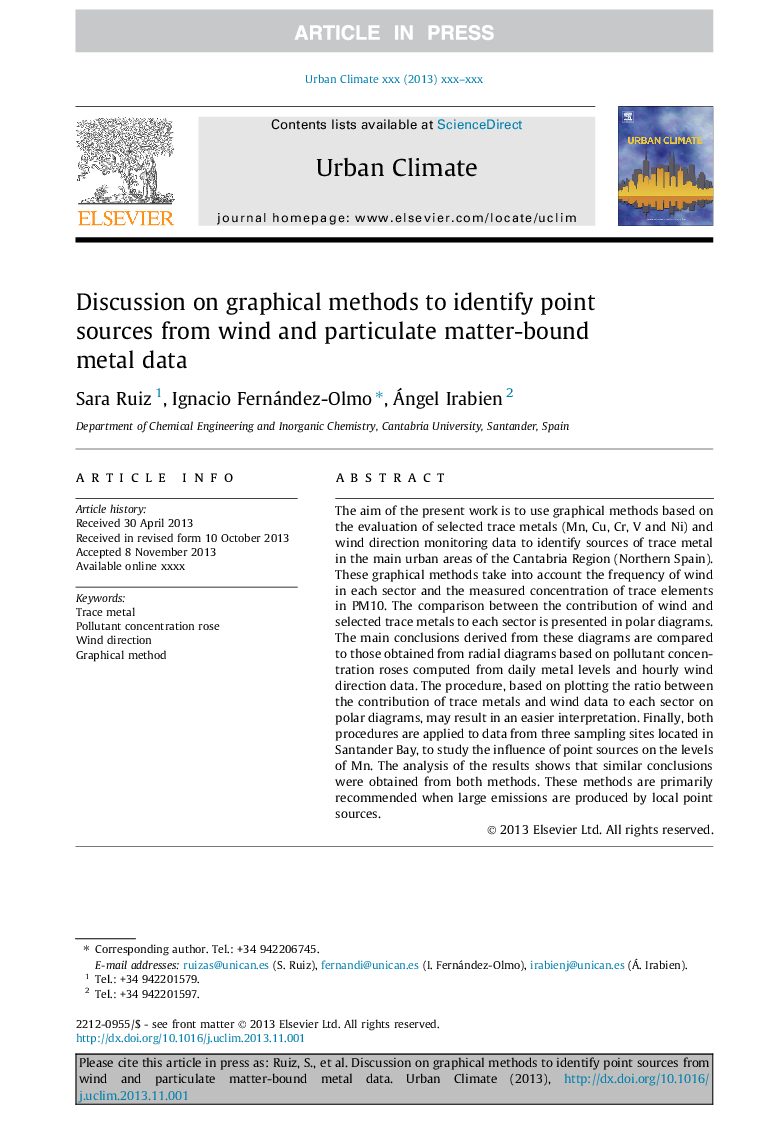| Article ID | Journal | Published Year | Pages | File Type |
|---|---|---|---|---|
| 10260279 | Urban Climate | 2014 | 11 Pages |
Abstract
The aim of the present work is to use graphical methods based on the evaluation of selected trace metals (Mn, Cu, Cr, V and Ni) and wind direction monitoring data to identify sources of trace metal in the main urban areas of the Cantabria Region (Northern Spain). These graphical methods take into account the frequency of wind in each sector and the measured concentration of trace elements in PM10. The comparison between the contribution of wind and selected trace metals to each sector is presented in polar diagrams. The main conclusions derived from these diagrams are compared to those obtained from radial diagrams based on pollutant concentration roses computed from daily metal levels and hourly wind direction data. The procedure, based on plotting the ratio between the contribution of trace metals and wind data to each sector on polar diagrams, may result in an easier interpretation. Finally, both procedures are applied to data from three sampling sites located in Santander Bay, to study the influence of point sources on the levels of Mn. The analysis of the results shows that similar conclusions were obtained from both methods. These methods are primarily recommended when large emissions are produced by local point sources.
Related Topics
Physical Sciences and Engineering
Earth and Planetary Sciences
Earth and Planetary Sciences (General)
Authors
Sara Ruiz, Ignacio Fernández-Olmo, Ángel Irabien,
